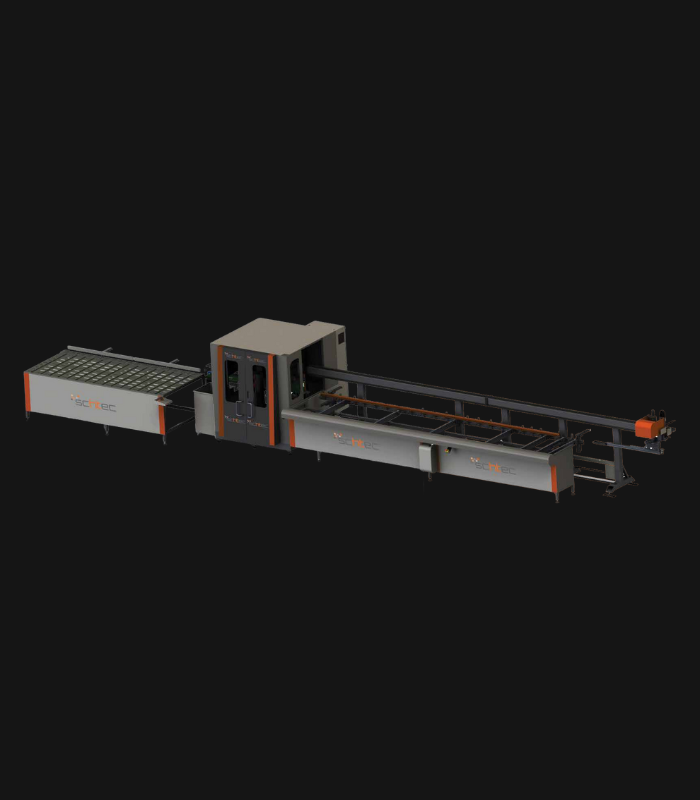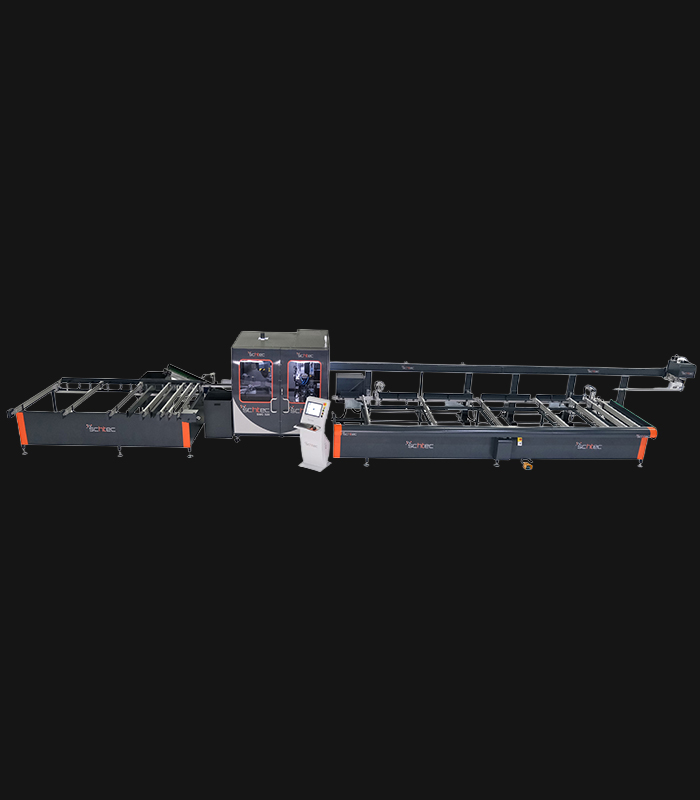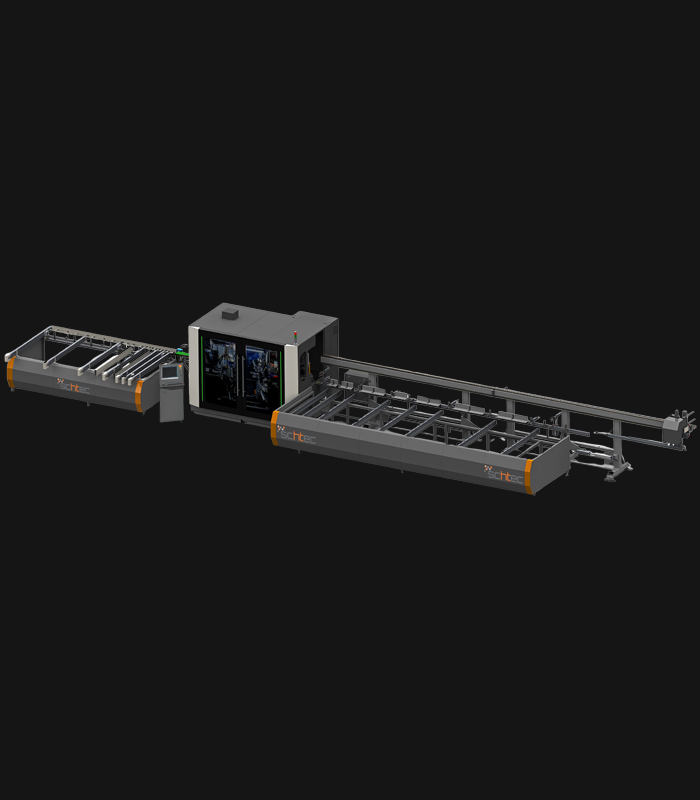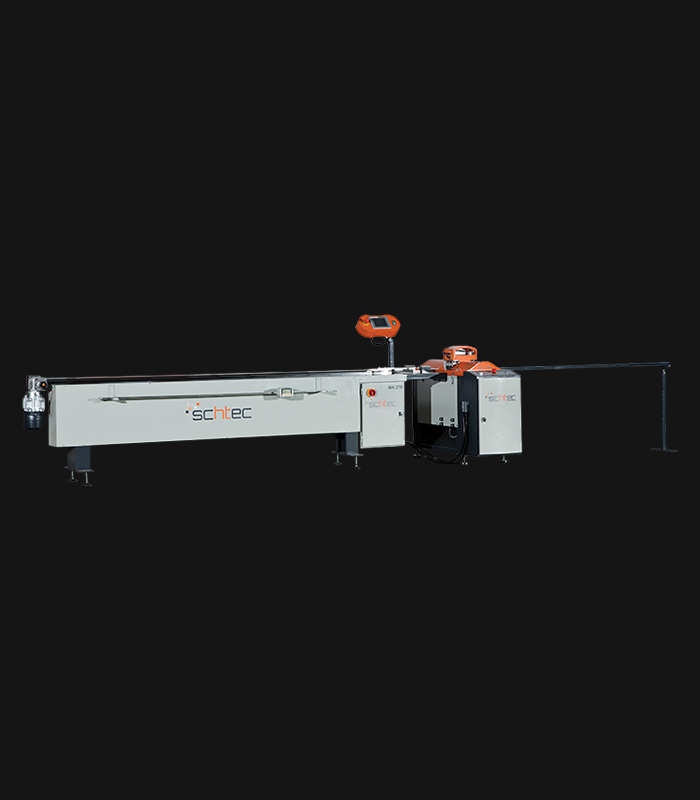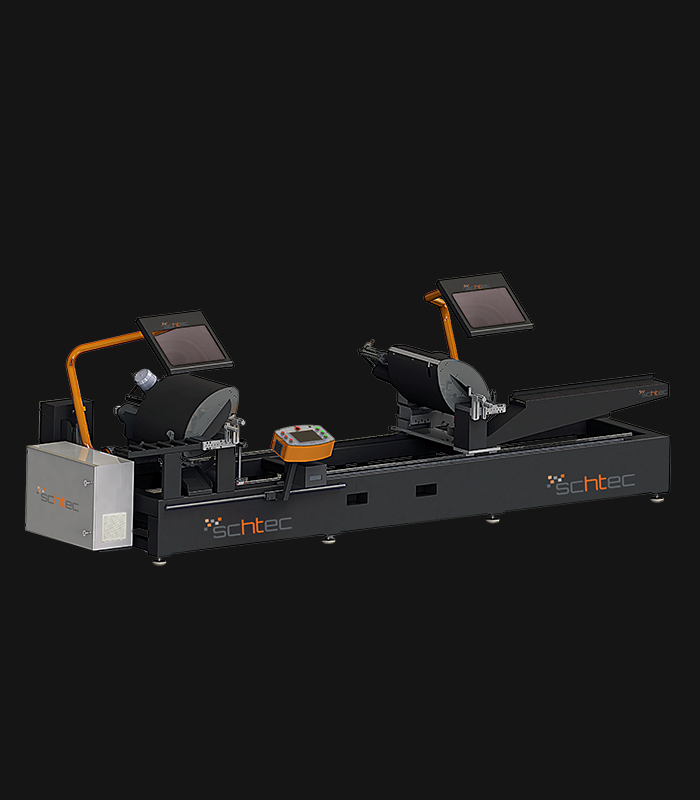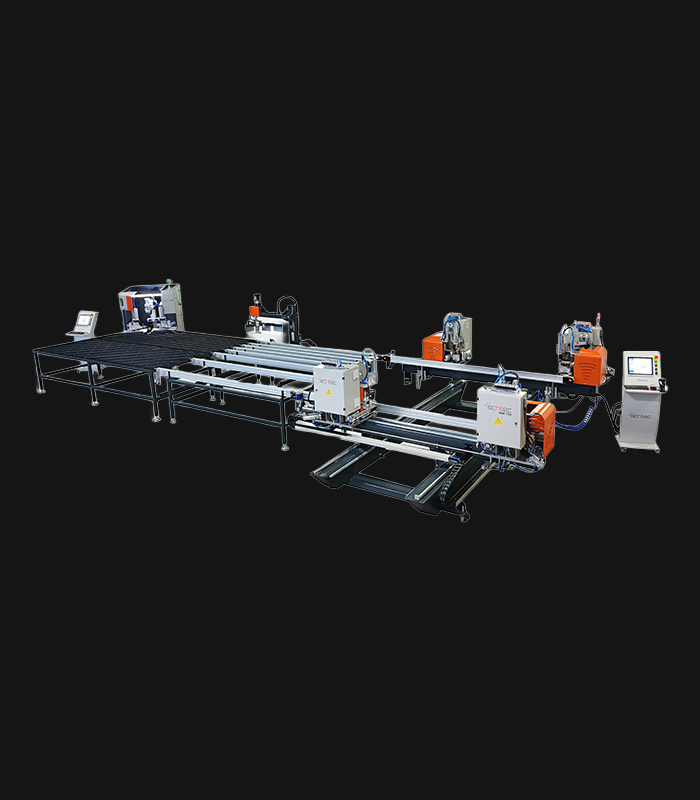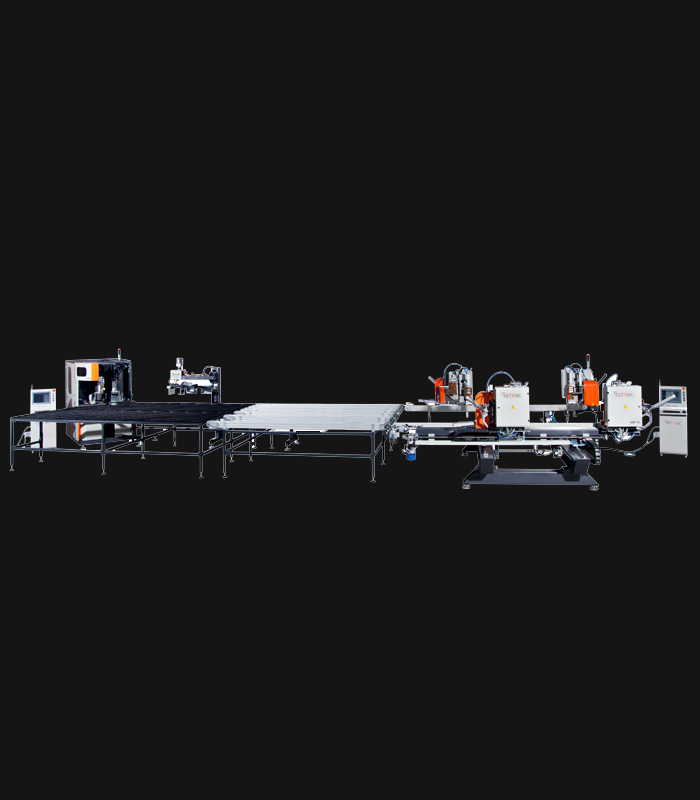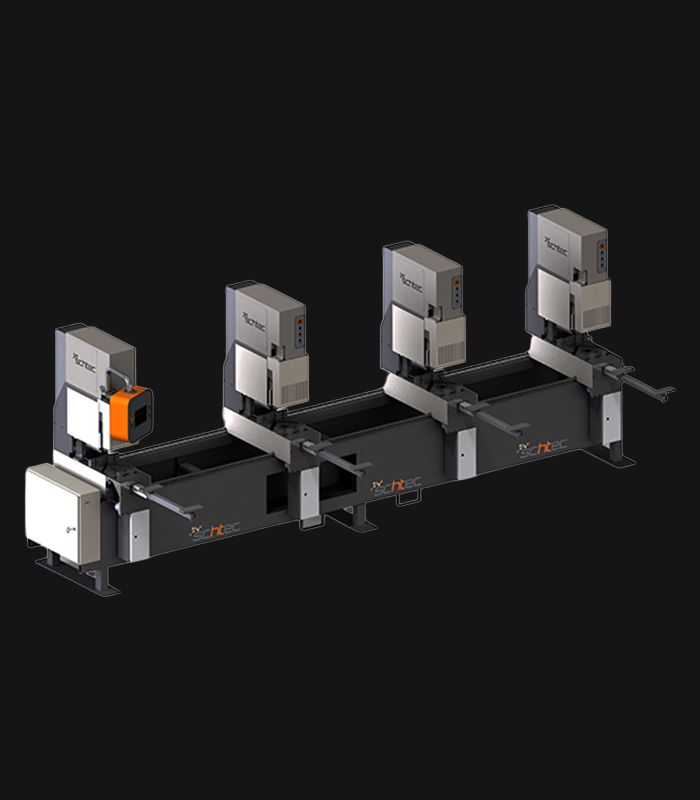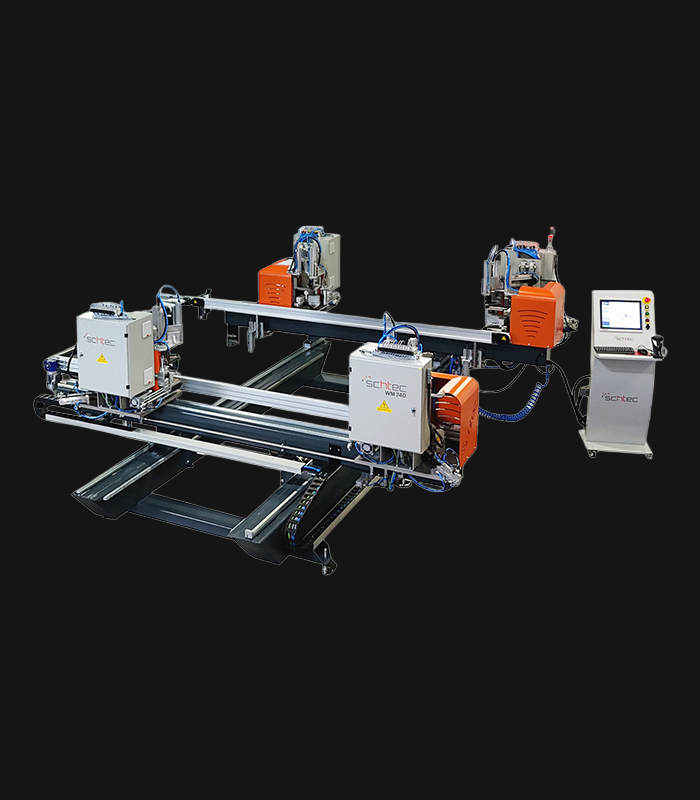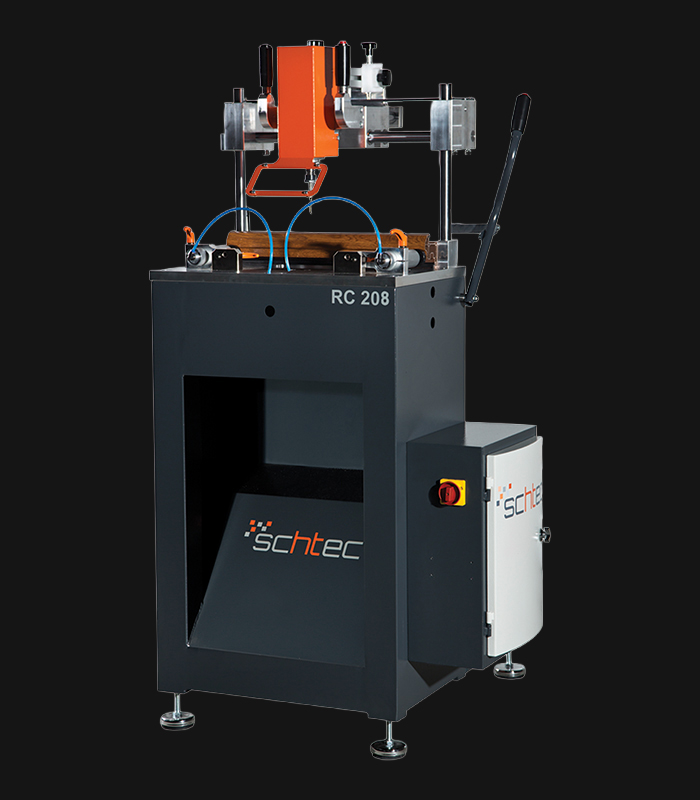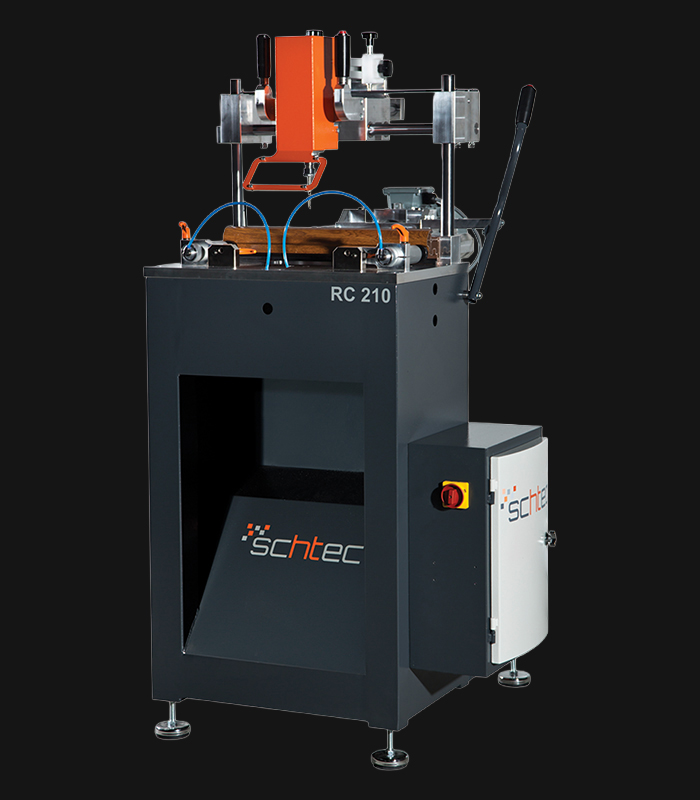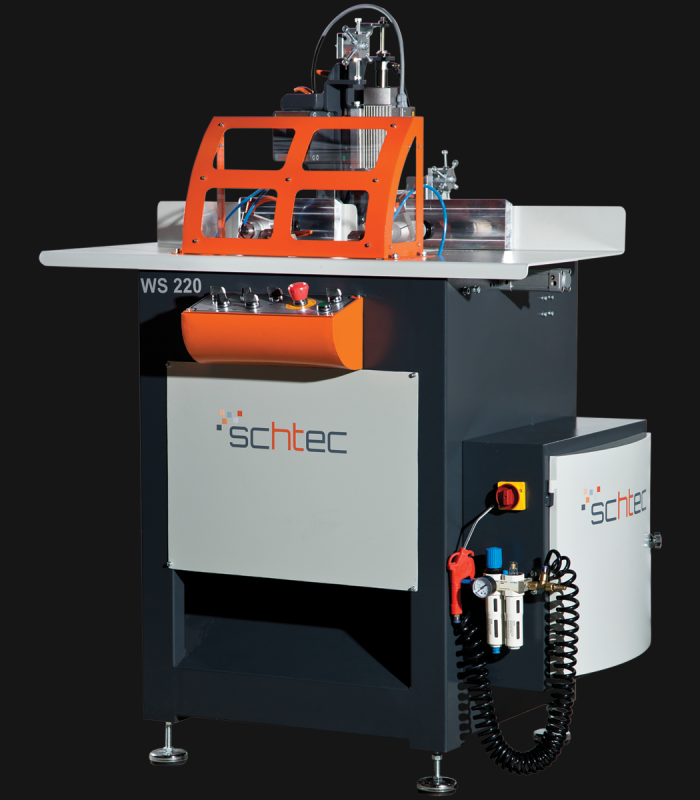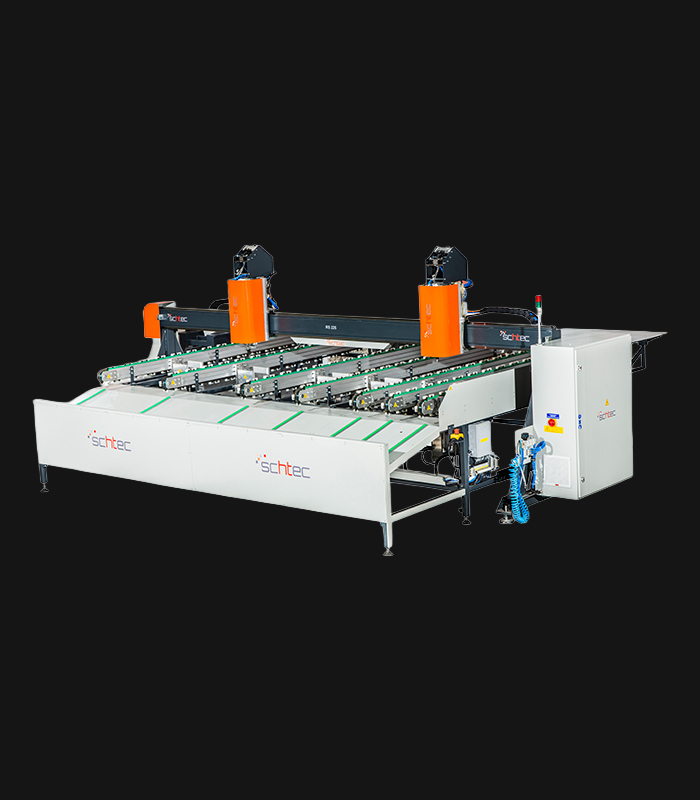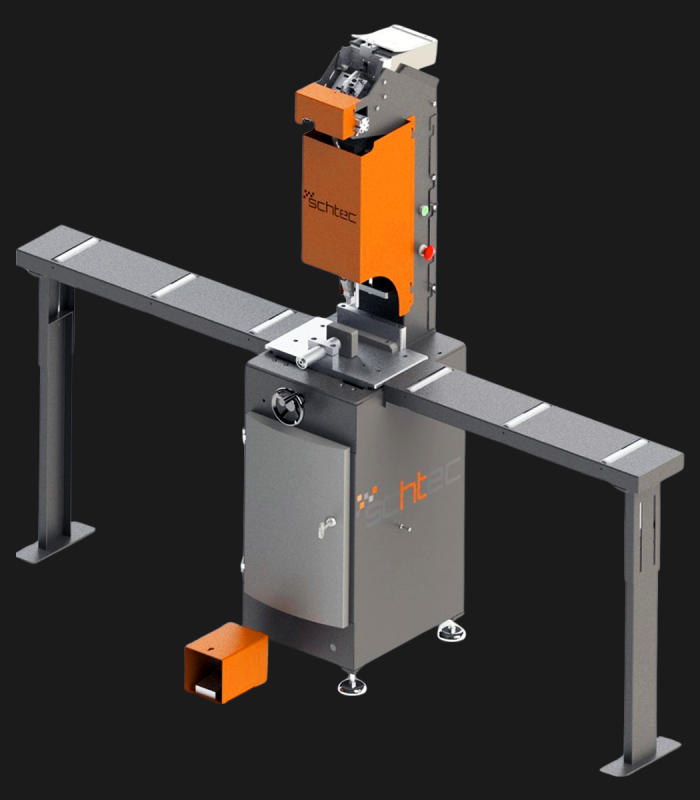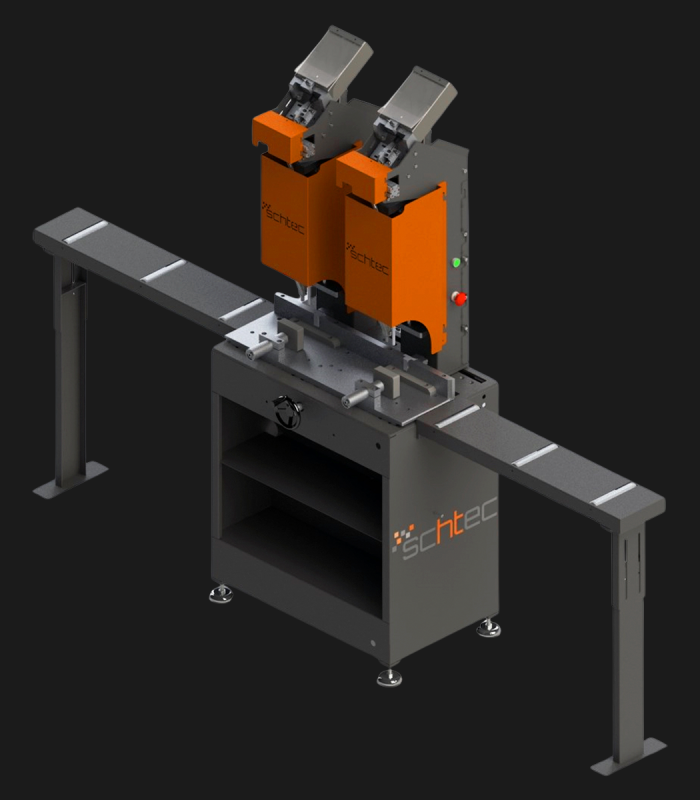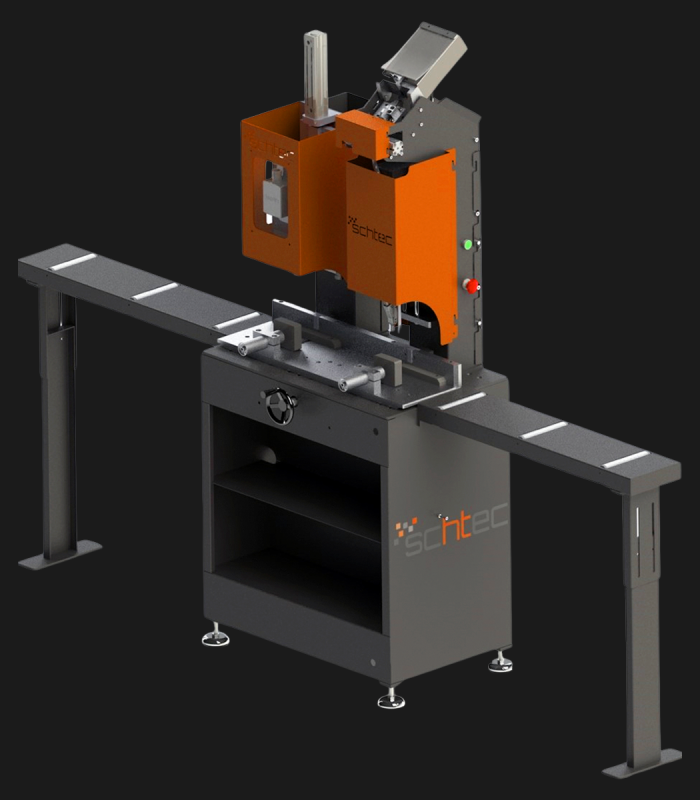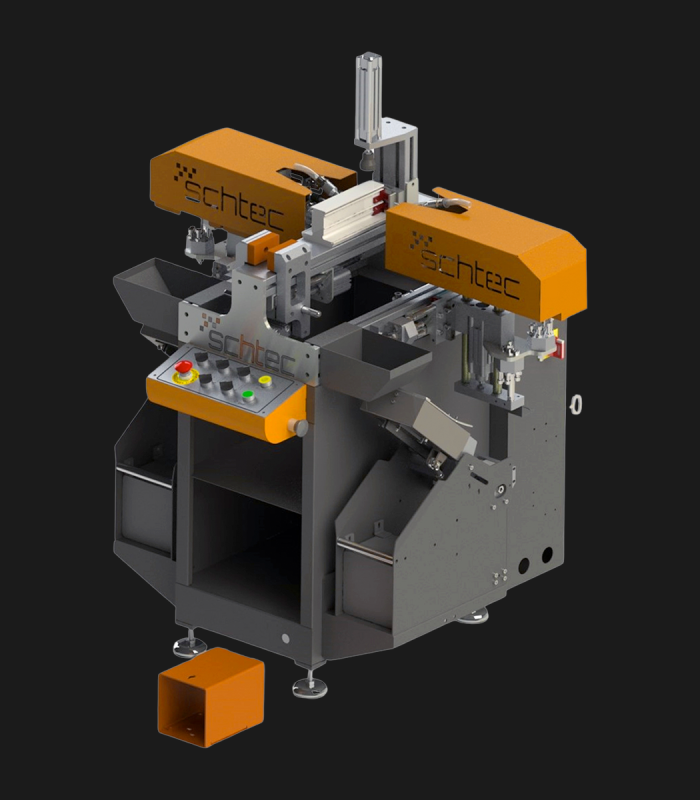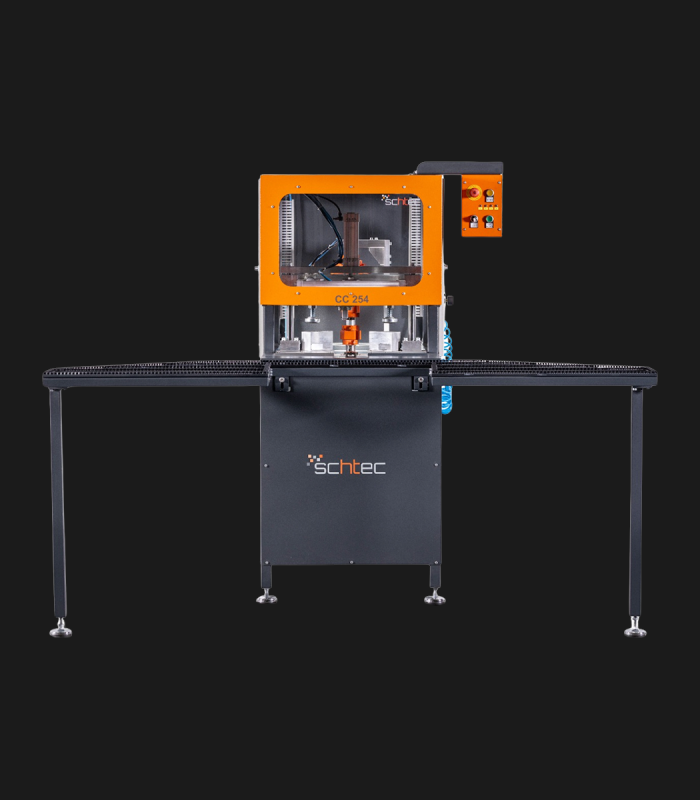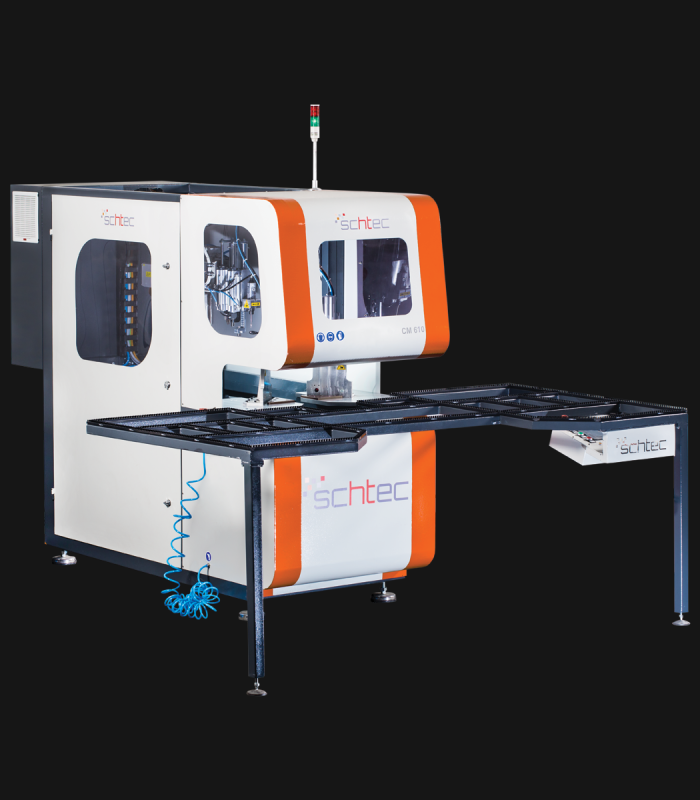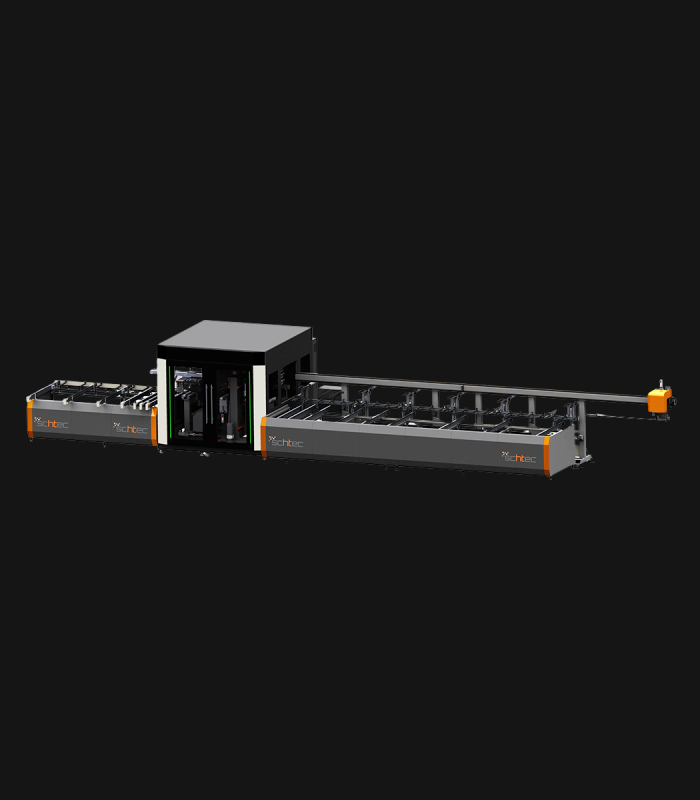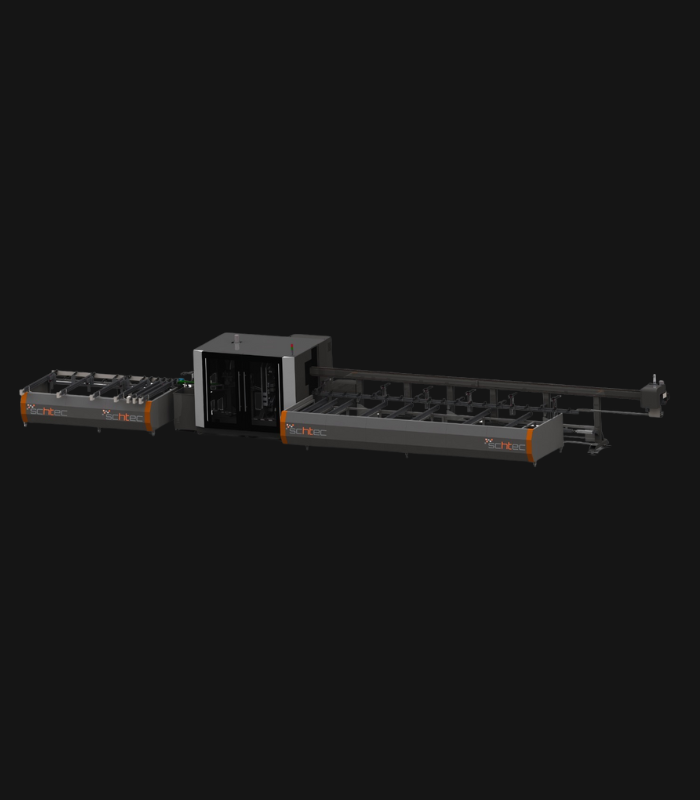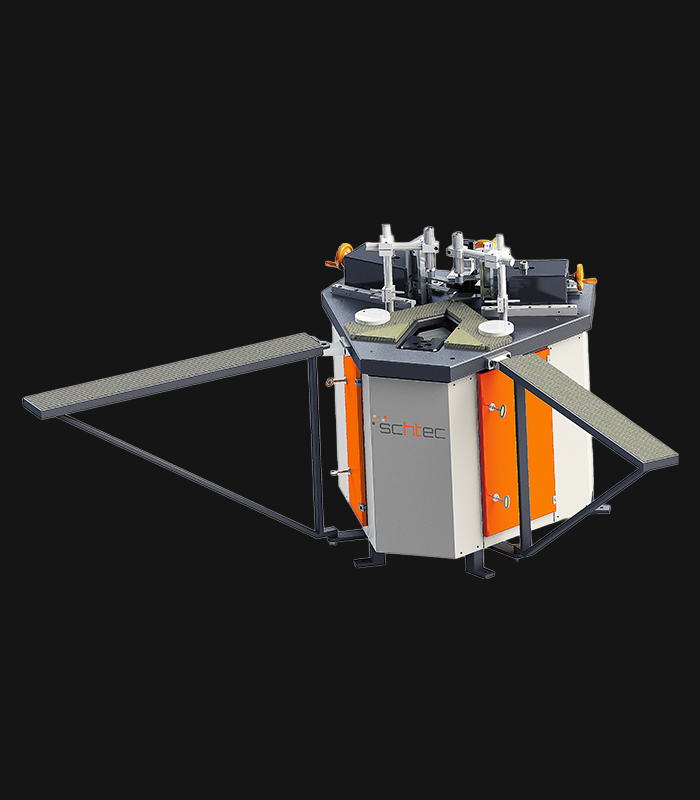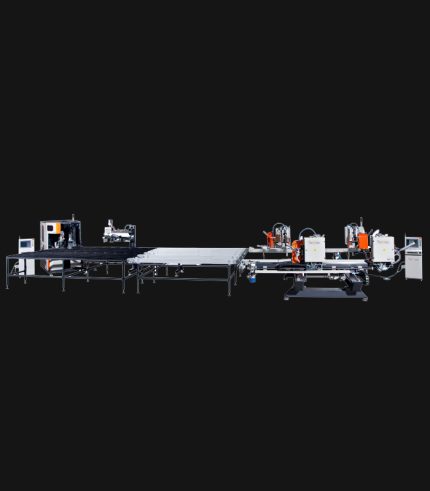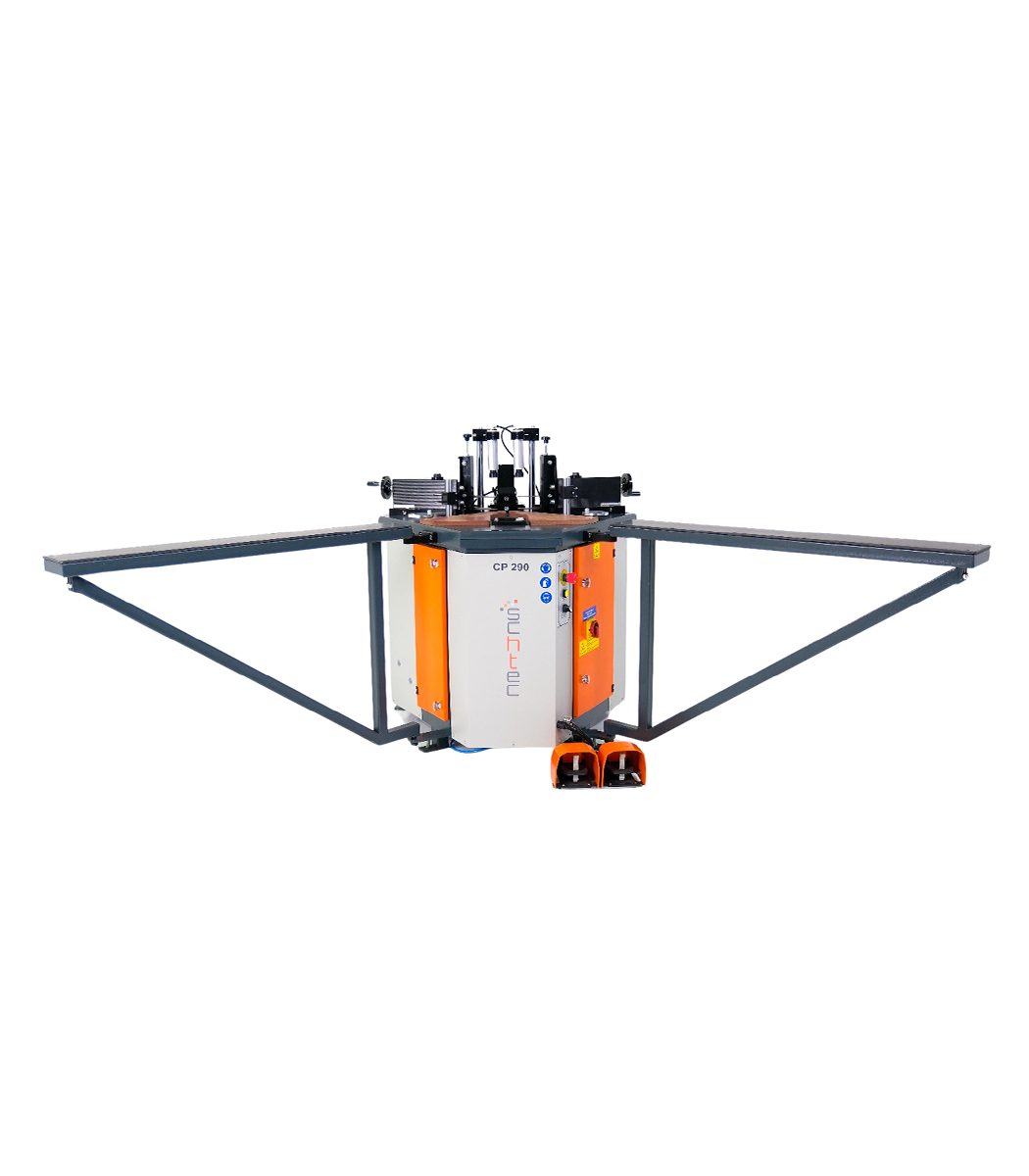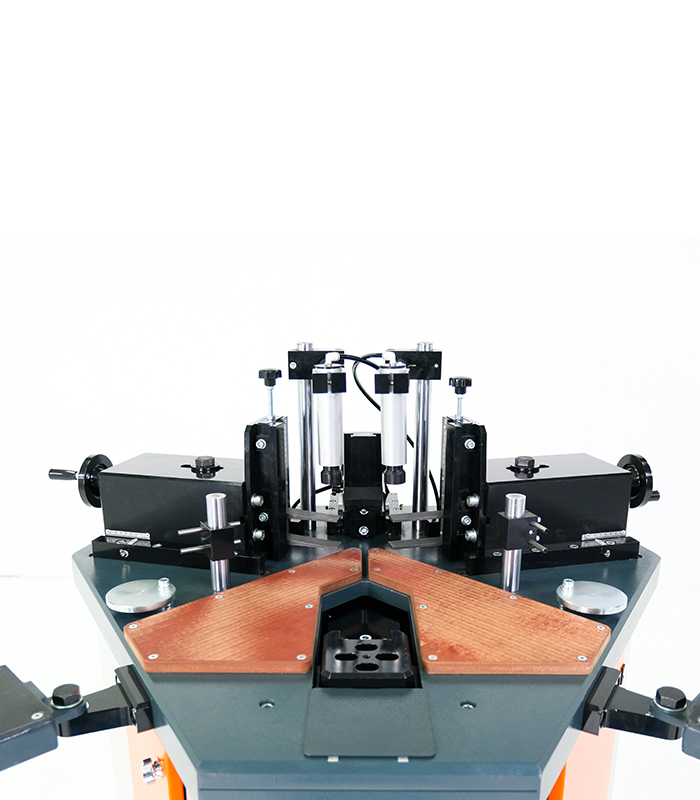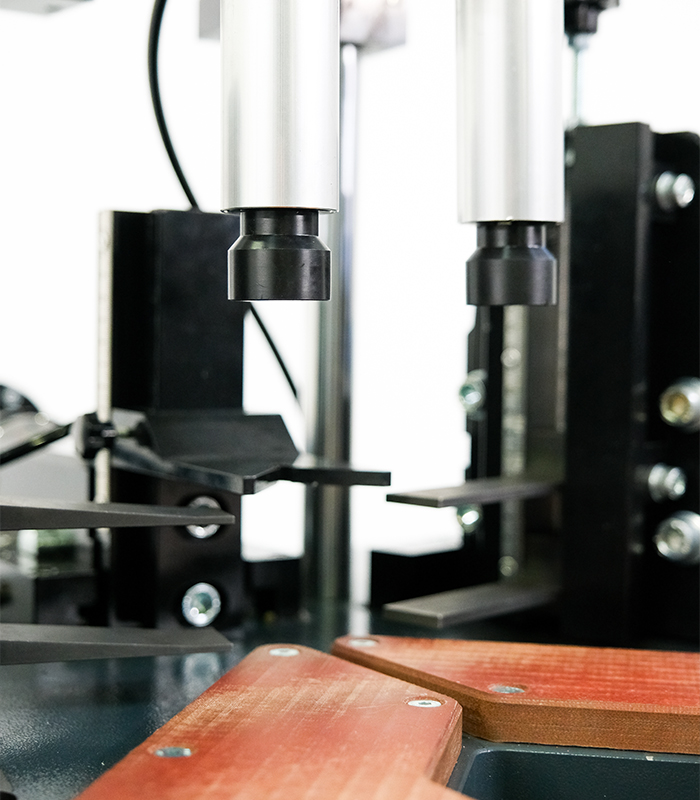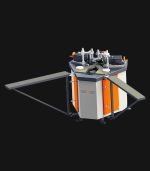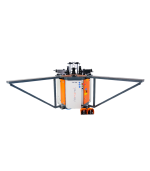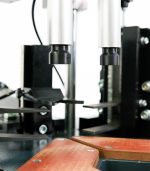CP 290 Corner Crimping Machine
SCHTEC CP 290: Precise 90° aluminum joints with 7-ton/cm² force. Quick blade change, foot pedal control, and front mitre system ensure efficiency for profiles up to 220 mm.
CP290 TECHNICAL SPECIFICATIONS
| Power Supply | 220 V, 1 Ph, 50-60 Hz |
| Power Output | 2.2 kW, 5.5 A |
| Side Cylinder Pressing Power | 7 ton/cm² |
| Upper Cylinder Pressing Power | 3 ton/cm² |
| Air Pressure | 6-8 bar |
| Air Consumption | 60 l/min |
| Max. Profile Height | 220 mm |
| Max. Knives Pressing Height | 190 mm |
| Min. Frame Size | 350 mm x 350 mm |
| Machine Height | 1,300 mm |
| Machine Length | 900 mm (1,760 mm with support arms) |
| Machine Width | 1,200 mm (2,525 mm with support arms) |
| Machine Weight | 575 kg |
Standard Features
- Joins Aluminium profiles corners by pressing them together
- Pneumatic high pressure power system (easy maintenance)
- Ability to work with different profiles sizes
- Small frames can be joined by specially designed clamping unit
- Quick blade changing system
- The front set square system is designed for easy profile loading and unloading
- Pressing process is done step by step with a foot pedal
- Support arms are included as standard
Product Description
The Schtec CP 290 is a high-pressure corner crimping machine designed to provide strong and aesthetically pleasing 90° joints for aluminum profiles. With a hydropneumatic system delivering 7 tons/cm² of pressing force, the CP 290 ensures maximum durability and precision, especially for large profiles. The machine features quick blade change and a special clamping unit for flexible and safe operation. Step-by-step control is provided via a foot pedal, while the front mitre system speeds up profile alignment and positioning. Supporting profile heights up to 220 mm, with a weight of 575 kg, robust support arms, and ergonomic design, the CP 290 enables smooth operation across various frame sizes.
Frequently Asked Questions
Find quick answers to common questions about our Corner Crimping Machines.


